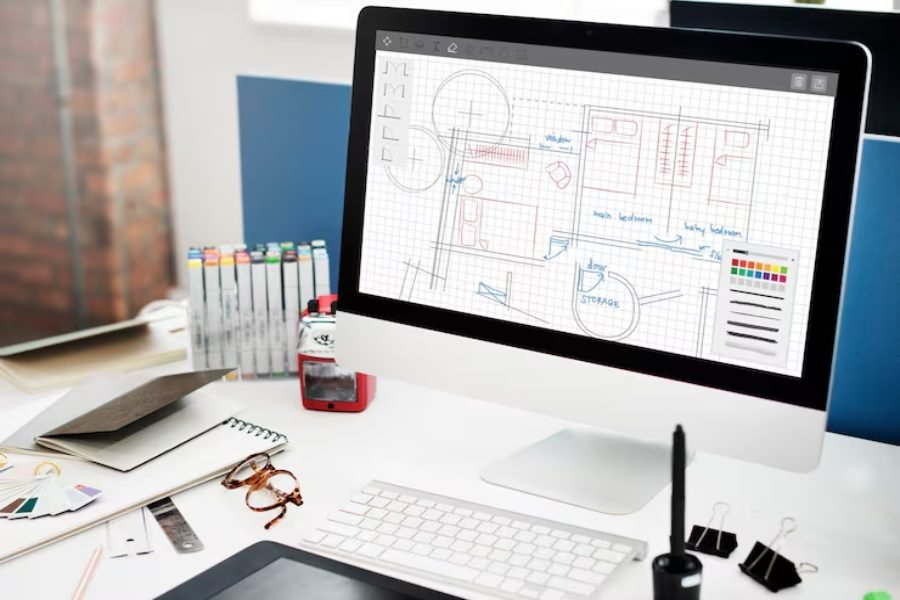
In the evolving landscape of creativity, design systems have become essential in shaping how brands communicate their identity. A design system is more than a collection of visual rules; it is a structured framework that brings order, consistency, and harmony to every aspect of art & design. By uniting artistic expression with practical design principles, these systems allow brands to create experiences that are both memorable and functional.
At the core of every strong brand lies a balance between art and design. Art adds depth, emotion, and storytelling, while design provides structure, clarity, and usability. When these two elements work together through a cohesive system, they form a powerful tool that enhances recognition and trust. From typography and color choices to imagery and interactive components, every detail contributes to a unified brand presence.
Design systems also play a crucial role in supporting growth. They provide teams with a clear roadmap, reducing inconsistencies and enabling faster creative output. Whether applied to digital platforms, print materials, or marketing campaigns, the system ensures that art & design remain aligned with the brand’s vision. This consistency not only strengthens visual identity but also builds lasting connections with audiences.
Establishing The Foundation Of Design Systems
The foundation of any successful brand begins with a strong design system. At its core, a design system is a structured set of guidelines that defines how visual and functional elements should appear and behave across different platforms. It acts as the framework that ensures art & design remain cohesive, no matter where or how the brand is presented. By creating a foundation rooted in consistency, companies can deliver experiences that feel polished, reliable, and aligned with their identity.
Art plays a vital role in shaping the emotional tone of a brand, while design ensures that this creative expression is communicated clearly and effectively. Together, they form a visual language that resonates with audiences and strengthens recognition. A design system captures this balance by standardizing key elements such as typography, color palettes, iconography, and imagery. These components are carefully documented so that every team member, from designers to developers, can maintain unity while still allowing space for creativity.
Another crucial aspect of establishing a design system is scalability. As a brand grows, its need for new assets and applications also expands. A well-defined system makes it easier to adapt, ensuring that art & design can evolve without losing the essence of the brand. This scalability not only saves time but also prevents inconsistencies that could weaken the overall identity. By investing in a strong foundation, brands create a lasting framework that supports both artistic expression and structured design for long-term growth.
Bridging Art And Design For Unified Branding
Branding thrives when creativity and structure come together in harmony. Art & design play complementary roles in building this harmony, where art introduces emotion and storytelling while design provides clarity and order. When combined, they create a unified brand presence that is not only visually appealing but also meaningful to audiences. Bridging these two elements ensures that a brand communicates both its personality and its professionalism effectively.
Art has the power to evoke feelings, spark imagination, and connect on a human level. It represents the expressive side of branding—whether through illustrations, photography, or symbolic imagery. On the other hand, design ensures that this artistic energy is channeled with purpose. It organizes layouts, aligns proportions, and applies systems that make creative work functional across various platforms. Together, art & design become a language that speaks consistently and authentically to consumers.
In practice, bridging art and design means aligning every visual choice with the core identity of the brand. A logo, for example, should reflect artistic expression while also adhering to design principles that make it versatile and recognizable. Similarly, marketing campaigns can draw on artistic creativity but must be structured within a design framework to maintain clarity and impact.
When art and design are integrated thoughtfully, the result is a seamless brand experience. This unity strengthens recognition, fosters trust, and creates lasting impressions. By merging emotion with structure, brands can achieve a balance that celebrates creativity while reinforcing consistency.
Defining Core Brand Elements
Every successful brand is built on a set of carefully defined core elements that guide how it presents itself to the world. These elements form the visual and emotional identity of a company, ensuring that art & design work hand in hand to create consistency and recognition. By establishing these fundamentals, a brand gains clarity in communication and a strong foundation for growth.
One of the most significant elements is typography. The choice of fonts conveys personality and tone—whether a brand wants to appear modern, elegant, or approachable. Typography, when used consistently, helps reinforce the overall message and contributes to a recognizable identity. Alongside typography, color palettes are another defining factor. Colors carry emotional weight, and the right palette strengthens the connection between art and design by aligning visual expression with brand values.
Imagery and iconography also play an essential role. Photographs, illustrations, and even tattoo design can add depth to storytelling and create emotional resonance. These artistic components must be balanced with clear design principles so they remain functional across different platforms, from digital interfaces to print materials.
Finally, logos serve as the centerpiece of visual identity. They embody the union of art & design, combining creative symbolism with practical adaptability. A logo must be versatile enough to work at any scale while still carrying the unique essence of the brand.
By defining these core elements with intention, brands create a unified system where art and design work seamlessly, ensuring every touchpoint reflects the same voice and vision.
Improving User Experience Through Cohesion
A seamless user experience is built on the principle of cohesion. When art & design elements work together in a consistent way, they guide users effortlessly through interactions, reducing friction and increasing satisfaction. Cohesion ensures that every visual and functional detail feels intentional, creating an experience that is not only visually pleasing but also intuitive.
Art contributes emotion and visual richness, while design introduces order and functionality. If these elements are inconsistent, users can feel disoriented or overwhelmed. However, when aligned, they establish familiarity. For example, consistent use of typography, colors, and iconography helps users quickly recognize patterns, making navigation easier across websites, apps, and marketing materials. This balance between art and design builds trust by showing attention to detail and respect for the user’s time.
Cohesion also enhances accessibility. When visual elements follow clear standards, content becomes more readable and interfaces more predictable. This ensures that users of all abilities can engage with the brand comfortably.
Moreover, a cohesive system creates emotional resonance. Audiences form stronger connections when every detail—from imagery to layout—communicates the same tone and story. By merging expressive art with structured design, brands create experiences that are both practical and memorable.
Ultimately, cohesion transforms art & design into a unified language. This consistency elevates user experience, ensuring interactions feel smooth, recognizable, and aligned with the brand’s identity at every touchpoint.
Strengthening Emotional Connections With Audiences
A successful brand goes beyond visual appeal; it creates an emotional bond with its audience. Art & design play a pivotal role in shaping this connection by combining creativity with clarity to evoke trust, loyalty, and inspiration. Through intentional use of visual elements, brands can build experiences that resonate on a deeper level, transforming casual viewers into long-term supporters.
Art captures emotion and conveys meaning that words alone cannot express. It allows a brand to tell stories, spark imagination, and communicate values in a way that feels authentic. A thoughtful illustration, a symbolic logo, or even a carefully chosen photograph can inspire feelings of belonging and recognition. Design, meanwhile, ensures that this artistic expression is delivered in a way that is clear, consistent, and accessible. By blending art with structured design, brands can express their personality while maintaining reliability.
Consistency is key in strengthening emotional connections. When audiences encounter familiar typography, color schemes, and imagery across different touchpoints, they feel a sense of continuity and trust. This familiarity reassures them that the brand is dependable and intentional in its communication.
Furthermore, emotional connections thrive on relatability. By using art & design that reflects cultural values, audience interests, or shared aspirations, brands demonstrate empathy and understanding. This not only enhances engagement but also nurtures loyalty over time.
Ultimately, when art and design are used together to connect emotionally, they create memorable experiences that move beyond aesthetics, building relationships that last well into the future.
Creating A Legacy Of Visual Integrity
A strong brand is not only defined by its present identity but also by the legacy it leaves behind. Establishing visual integrity through art & design ensures that a brand remains consistent, trustworthy, and recognizable for years to come. Visual integrity is about protecting the core principles of creativity and structure so that the brand continues to communicate its values with clarity, no matter how trends or markets evolve.
Art provides the expressive foundation that gives a brand its unique character, while design organizes this creativity into a system that can stand the test of time. Together, they form a visual language that reflects both personality and professionalism. By documenting standards for typography, color, imagery, and layouts, brands can ensure that every future piece of work stays true to the original vision. This preservation of integrity prevents dilution of identity and maintains long-term cohesion.
Creating a legacy also requires adaptability. As technology advances and design trends shift, a brand must evolve without losing its essence. A design system rooted in strong principles of art & design allows flexibility while safeguarding the brand’s authenticity. This balance ensures that innovation enhances rather than disrupts visual identity.
When audiences encounter a brand that consistently upholds visual integrity, they develop trust and loyalty. Over time, this reliability transforms into heritage—an enduring presence that reflects commitment to both creativity and consistency. By investing in art and design systems, brands secure a visual legacy that continues to inspire and engage across generations.
Conclusion
Design systems are more than organizational tools; they are the foundation that unites creativity and structure. By aligning art & design within a consistent framework, brands can communicate with clarity, build trust, and foster long-lasting recognition. Art provides the emotion that inspires, while design ensures function and order. When these forces work together, they create experiences that are both meaningful and memorable. A strong system not only supports growth but also preserves integrity for the future. Ultimately, the harmony of art and design empowers brands to leave a lasting impression that resonates across every audience and platform.
